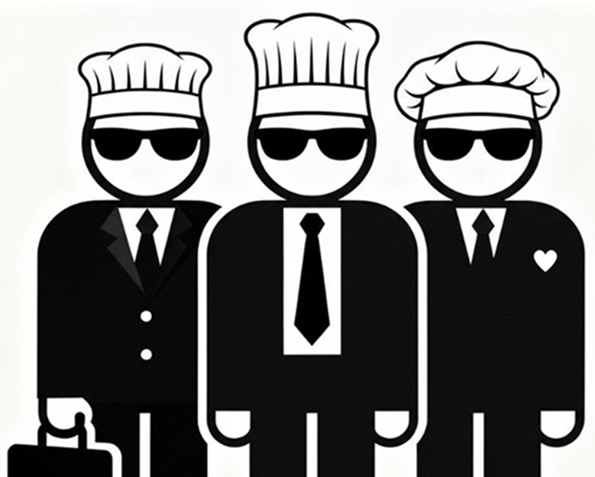Three Cooks, One Kitchen: Stirring Up Solutions for Innovation

Picture this: you’re in a room packed with rumbling stomachs. Three “experts” stride in—one from government, one from business, and one from the social purpose sector.
Do they meet and chat? No, they do not. Each cook moves to a different kitchen corner and gets lost in their own recipe, blissfully unaware of the others — and of those not in the room who might still be hungry.
It’s like an episode of “Top Chef Canada,” but nobody’s winning and everybody’s still starving.
Most folks recognize those three sectors: public (government), private (business), and social purpose (Charity, NGO, Civic Society, etc.). Typically, they operate solo, each convinced their flavour is best, when what we actually need is a cohesive recipe—not three separate mystery boxes.
Cooking Up Solutions: Social vs. Systems Innovation
Now, imagine someone suggesting a new approach. It isn’t always about picking one team — either “social innovation” or “systems innovation” — but sometimes a little bit of both—call it a “chef’s blend.”
Social innovation whips up creative, collaborative solutions to immediate problems (like hunger). Think of community brainstorming, asset mapping, and no one-size-fits-all recipes—just homegrown, crowd-sourced cooking that empowers everyone in the kitchen, even the guy who only knows how to microwave popcorn.
Systems innovation, meanwhile, doesn’t just provide dinner and rearrange the pantry—they engage others in the community to capture their ideas, rebuild the kitchen and even the community hall itself. It’s not content with feeding today’s crowd; it wants a kitchen that never runs out of food, and maybe throws in some cooking classes and job opportunities as well. It’s about tackling the root causes (why is everyone hungry in the first place?) and mapping ALL the ingredients—poverty, safety, housing, employment—that contribute to hunger, to ensure everyone gets something on their plate.
So, Which Dish Do We Serve First?
Some “food critics” argue that you start with social innovation and gradually move to systems innovation and change. Others say fire up the system’s stovetop first. But for most communities, hunger is urgent—a fast snack is needed—and social innovation gets dinner served, pronto. Still, there’s always tomorrow’s meal to worry about, which is why systems innovation starts by prepping for the next feast.
The Collaborative Cooking Analogy (Hold onto Your Pots)
Forget the boring “stakeholder meetings.” Imagine community change as a potluck dinner. Collaborative cooking isn’t just about food; it’s about every community member bringing their own secret sauce. Maybe your neighbour’s obsessed with economic opportunity, and someone else wants to fight global warming. Systems innovation brings all those ingredients together and ensures no one leaves hungry or unheard—even picky eaters.
Making the Kitchen Work for Everyone
Here’s the catch: Communities are like living ecosystems—you can’t fix hunger without considering housing, jobs, health, and even that funky, slightly mysterious sense of “belonging.” Systems innovators help map out every asset and priority, nudging everyone to see the big picture (with a menu of possibilities).
And the broken systems everyone complains about? They’re really “not broken,” just outdated—like using a wood-fired stove to prepare a quick microwave meal. What’s needed is a kitchen remodel, funded and managed for the actual complexity people are now living with.
How Do We Get Three Cooks to Collaborate and Innovate?
Picture three cooks, each a kitchen maestro, perfectly at home in their own domain, serving up their signature dishes with confidence. Now ask them to join forces, engage those they are cooking for, and whip up something new together—suddenly, the spatulas aren’t the only things flying. Collaboration in the kitchen, much like in social or systems innovation, can feel risky, a little messy, and occasionally hard to swallow.
So, what’s the secret ingredient for success? Honey — otherwise known as capital. Both private and public investors can sweeten the mix by enabling kitchen expansion, the purchase of the latest gadgets, and the introduction of rare, tantalizing ingredients. Better yet, they can invite a few more visionary chefs to stir the pot.
Investors need a real seat at the table, not just a tasting spoon. Together, they can co-create dazzling new recipes that elevate the old potluck standbys and transform the entire dining experience. Because when three kitchen maestros finally join forces, the result isn’t just dinner—it’s a feast worth lining up for.
What’s the Takeaway? (Besides Leftovers)
In the end, there’s no “right” recipe, only tasty experiments. The real win comes when communities become adaptive, resilient, and able to tackle the next big challenge—whether it’s dinner, dessert, or a future where hunger is off the menu for good.
Posted on 11-13-25Previous entry: Cars or Care? Time to Turbocharge Differently?

 Brenda Herchmer is the owner of Grassroots Enterprises, a community development consulting company.
Brenda Herchmer is the owner of Grassroots Enterprises, a community development consulting company.